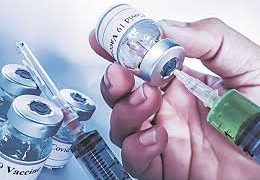A person suffering from tonsil cancer may have difficulty swallowing, swelling and pain in neck, jaw stiffness, ear ache among others. All you want to know about the cancer.
Tonsil cancer occurs when there is an abnormal growth in the cells that form your tonsil – two oval shaped pads at the back of your mouth. According to the American Cancer Society, 1 in 60 makes and 1 in 40 females are at lifetime risk of developing tonsil cancer. Cancers of head and neck usually begin in the cells that line the mucosal surfaces of the head and neck – inside the mouth, throat, nasal cavity, tonsil, tongue, voice box, salivary glands, para nasal sinuses, muscles and nerves in the head and neck. A person suffering from tonsil cancer may have difficulty swallowing, swelling and pain in neck, jaw stiffness, ear ache among others.
What is a tonsil?
“The oropharynx is the middle part of the pharynx, including the soft palate, the base of the tongue, and the tonsils. Any malignant cell infiltrating or if being produced in tonsil causes change in its size, structure of tonsil which causes difficulty in swallowing, swelling in neck, pain in ear and may be difficulty in breathing if the size increases too much,” says Dr Sunny Jain, HOD and Sr. Consultant Oncology, Marengo QRG Hospital Faridabad.
Signs and symptoms of tonsil cancer
Dr Jain also opens up on symptoms of tonsil cancer:
· Difficulty swallowing
· Pain during deglutition
· Persistent pain in ear
· Change in voice texture (potato voice)
· Weight loss, loss of appetite, fatigue
· Cervical lymph node enlargement
Causes of throat cancer
Body cells are programmed to reproduce and to die or undergo apoptosis at a set time, whenever there are changes which causes this harmony to disturb either the cells are reproduced unregulated or the cells don’t die or if there is defect in the repair mechanism which is body’s protective mechanism to kill the faulty cell it leads to cancer.
Causes of tonsil cancer
Dr Jain says the factors causing the changes in the DNA of the cell lining the throat are:
· Alcohol & tobacco: These are the two most common and confounding factors for all head and neck cancer including tonsil cancer. Alcohol and smoking work in synergy to cause cancer. I always tell this to my patients and other public gatherings – ‘tobacco in any and every form is prohibited.’
· Infection of human papillomavirus (HPV), is a risk factor for oropharyngeal cancers
· Submucosal fibrosis: In this condition patient complains of loss of reddishness or reddish hue of the oral mucosa which is generally replaced by whitish patch that is lustreless and it also causes decreased mouth opening.
· Radiation exposure: History of prior radiation to the head and neck, for any condition or cancer, can be a risk factor
· Epstein-Barr virus infection.
· Underlying genetic disorders such as Fanconi anaemia etc.
Treatment for tonsil cancer
Dr Jain also opens up on the treatment option that can be taken for tonsil cancer:
· Radiation therapy: Cancer treatment in which we use high dose of ionizing radiation targeting the exact tumour volume and draining lymph nodes using imaging like CT scan, PET scan etc minimising the dose spill to nearby critical structured is one of the mainstay of treatment for patient with tonsil cancer.
· Chemotherapy: It is the second main pillar of treatment for patients suffering from tonsil cancer. Chemotherapy involves infusing or using medicines that kill cancer cells and it may be given alone in advanced stages or may be given along with radiation as a radio sensitized chemotherapy to enhance the effect of radiation.
· Concurrent chemo and radiotherapy: As mentioned earlier it involves giving low dose chemotherapy to increase the effect of radiation and it forms the main stay of treatment for tonsil cancer patients as tonsil cancer is usually surgically not amenable owing to its anatomic position.
· Targeted therapy: These are special drugs which target a particular cell type based on the biopsy report and IHC/Flow cytometry.
· Clinical trials.





































